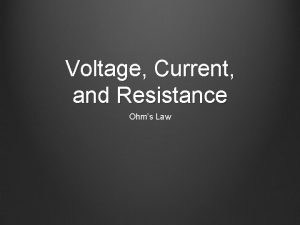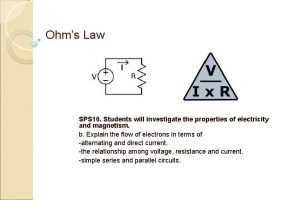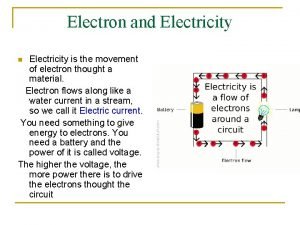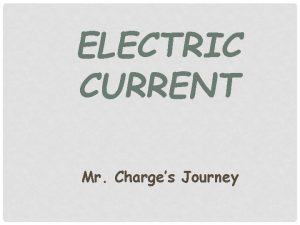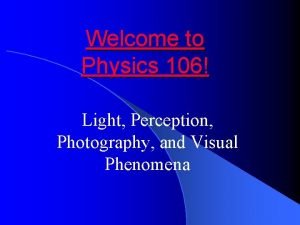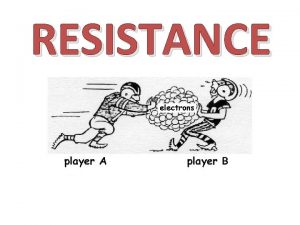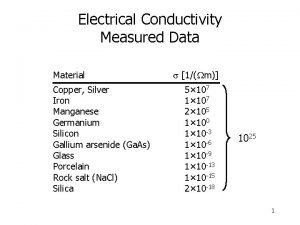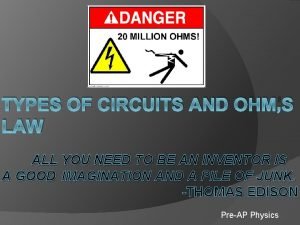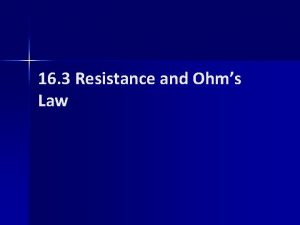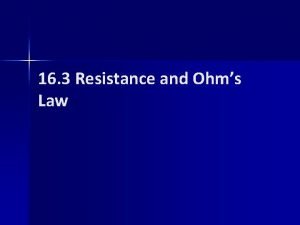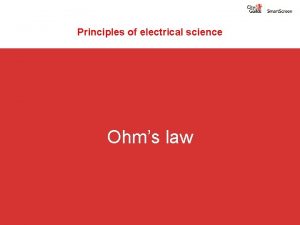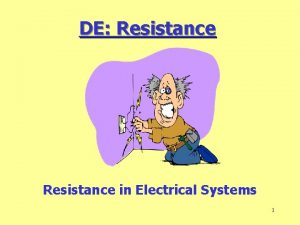Physics 106 Lesson 15 Electrical Resistance and Ohms









- Slides: 9

Physics 106 Lesson #15 Electrical Resistance and Ohm’s Law Dr. Andrew Tomasch 2405 Randall Lab atomasch@umich. edu

Resistors are used in appliances to convert electrical energy into thermal energy (heat) or light Toaster Space Heater Light Bulb When an extension cord is used with a space heater, the cord must have a resistance that is sufficiently small to prevent overheating of the cord Stove Heating Element

Ohm’s Law • The resistance of the resistor (light bulb) is R • The voltage across the resistor is V • The current through the resistor is I • Ohm’s Law: I Voltage = V R Voltage = 0 I Ohms (W) Assume perfect wire NO voltage drop across wires! I

Adding Series Resistors • For resistors R 1 & R 2 connected in series (sequentially), the current i passing through each resistor must be the same • The voltages across R 1 & R 2 must add up to V → V = i. R 1 + i. R 2 = i(R 1 + R 2) = i. Req V +

Adding Parallel Resistors • Resistors R 1 & R 2 connected in parallel have the same potential difference (voltage) V across them • The total current is the sum of the current through each resistor • I = I 1 + I 2 = V/R 1 + V/R 2 = V(1/R 1 + 1/R 2 ) = V /Req V +

More Ways to Calculate Power • Electric Potential Energy is transformed into to some other form (heat, light) by the resistor (light bulb). • Power: I Voltage = V R Voltage = 0 I Electric Potential (Energy) decreases across the light bulb (resistor) I

Ohm’s Law: Discussion • Ohm’s Law states that the potential difference across a resistor is proportional to the current flowing through it • Resistance is the constant of proportionality between current and voltage • Ohm’s “Law” is not a law at all—it is a definition. Semiconductor devices (diodes, transistors) are useful because they do not obey Ohm’s “Law”

Superconductivity: Zero Resistance • The resistance of many (but not all) substances decreases with temperature • A special class of materials known as superconductors lose all electrical resistance below a temperature known as the critical temperature • Superconductors can levitate magnets by the Meissner Effect where a perfect conductor expels all magnetic fields from its interior Demonstration

Using Superconductivity SMILI 1989 HEAT-pbar Powerful superconducting electromagnets, cooled with liquid Helium, produce intense magnetic fields that can be used to measure the momentum of charged Cosmic Ray particles (atomic nuclei) produced by supernova explosions in the galaxy. Superconducting Magnet HEAT-pbar 2000

